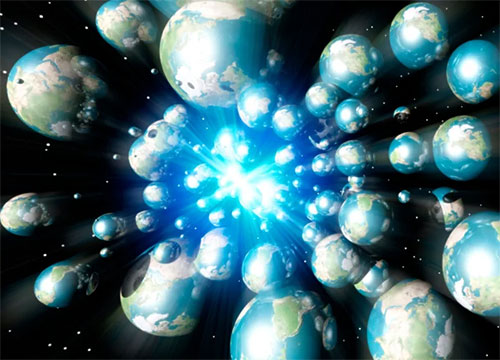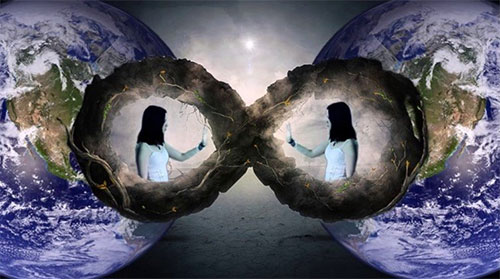Alternative timelines and parallel universes
It’s always interesting to explore the possibilities of our reality. Many people actually enjoy the pass-time of questioning our understanding of the universe to see if there are other possibilities we haven’t yet considered. In fact, with as many scientific discoveries that have been made and disclosed, it’s become difficult not to consider these alternative understandings of our universe.

It’s actually from these recent disclosures that we learn that many of the sci-fi stories we heard growing up were actually based in reality.
If you’re reading this, you may be familiar with the phenomenon known as the Mandela Effect. This effect is said to occur when the memories of past events differ in certain ways in the minds of different people. Some people remember past events as being one way while others tend to remember these events transpiring differently. The strangest part about this effect is that in most cases, there is evidence that both versions of the past actually happened.
What if you could see a divergence in reality occur right in front of you? That is, what if you could witness something similar to the Mandela Effect, but in real time, as though reality itself were diverging in two completely different directions before your eyes? Well, according to multiple Reddit users, this very thing happened to them in a number of different contexts.
In the past, mainstream science merely laughed at these concepts without actually using the scientific method to analyze them. Fortunately, this unprofessional obtrusiveness has recently been replaced with serious study and discussion about many subjects of the unknown (ETs, parallel worlds, time-travel, etc.).
It was actually strange to see the speed at which the attitudes within the mainstream scientific establishment about the unknown were changed. It was as though the entire scientific community and media shifted on a dime and suddenly took the unknown seriously. Though the shift was just as questionable as the paranormal topics these scientists are now addressing, the change is most definitely welcome.
So then, let’s find some footing in one of these topic of parallel universes.
1. Infinite Universes
Scientists can’t be sure what the shape of space-time is, but most likely, it’s flat (as opposed to spherical or even donut-shape) and stretches out infinitely. But if space-time goes on forever, then it must start repeating at some point, because there are a finite number of ways particles can be arranged in space and time.
So if you look far enough, you would encounter another version of you – in fact, infinite versions of you. Some of these twins will be doing exactly what you’re doing right now, while others will have worn a different sweater this morning, and still others will have made vastly different career and life choices.

Because the observable universe extends only as far as light has had a chance to get in the 13.7 billion years since the Big Bang (that would be 13.7 billion light-years), the space-time beyond that distance can be considered to be its own separate universe. In this way, a multitude of universes exists next to each other in a giant patchwork quilt of universes.
Space-time may stretch out to infinity. If so, then everything in our universe is bound to repeat at some point, creating a patchwork quilt of infinite universes.
2. Bubble Universes
In addition to the multiple universes created by infinitely extending space-time, other universes could arise from a theory called ‘eternal inflation.’ Inflation is the notion that the universe expanded rapidly after the Big Bang, in effect inflating like a balloon. Eternal inflation, first proposed by Tufts University cosmologist Alexander Vilenkin, suggests that some pockets of space stop inflating, while other regions continue to inflate, thus giving rise to many isolated ‘bubble universes.’
Thus, our own universe, where inflation has ended, allowing stars and galaxies to form, is but a small bubble in a vast sea of space, some of which is still inflating, that contains many other bubbles like ours. And in some of these bubble universes, the laws of physics and fundamental constants might be different than in ours, making some universes strange places indeed.
3. Parallel Universes
Another idea that arises from string theory is the notion of ‘braneworlds’ – parallel universes that hover just out of reach of our own, proposed by Princeton University’s Paul Steinhardt and Neil Turok of the Perimeter Institute for Theoretical Physics in Ontario, Canada. The idea comes from the possibility of many more dimensions to our world than the three of space and one of time that we know. In addition to our own three-dimensional ‘brane’ of space, other three-dimensional branes may float in a higher-dimensional space.
Our universe may live in one bubble that is sitting in a network of bubble universes in space.
Columbia University physicist Brian Greene describes the idea as the notion that ‘our universe is one of potentially numerous ‘slabs’ floating in a higher-dimensional space, much like a slice of bread within a grander cosmic loaf,’ in his book ‘The Hidden Reality’ (Vintage Books, 2011).
A further wrinkle on this theory suggests these brane universes aren’t always parallel and out of reach. Sometimes, they might slam into each other, causing repeated Big Bangs that reset the universes over and over again.
4. Daughter Universes
The theory of quantum mechanics, which reigns over the tiny world of subatomic particles, suggests another way multiple universes might arise. Quantum mechanics describes the world in terms of probabilities, rather than definite outcomes. And the mathematics of this theory might suggest that all possible outcomes of a situation do occur – in their own separate universes.
For example, if you reach a crossroads where you can go right or left, the present universe gives rise to two daughter universes: one in which you go right, and one in which you go left.
‘And in each universe, there’s a copy of you witnessing one or the other outcome, thinking – incorrectly – that your reality is the only reality,’ Greene wrote in ‘The Hidden Reality.’
5. Mathematical Universes
Scientists have debated whether mathematics is simply a useful tool for describing the universe, or whether math itself is the fundamental reality, and our observations of the universe are just imperfect perceptions of its true mathematical nature. If the latter is the case, then perhaps the particular mathematical structure that makes up our universe isn’t the only option, and in fact all possible mathematical structures exist as their own separate universes.
‘A mathematical structure is something that you can describe in a way that’s completely independent of human baggage,’ said Max Tegmark of MIT, who proposed this brain-twisting idea. ‘I really believe that there is this universe out there that can exist independently of me that would continue to exist even if there were no humans.’
yogaesoteric
March 24, 2020
